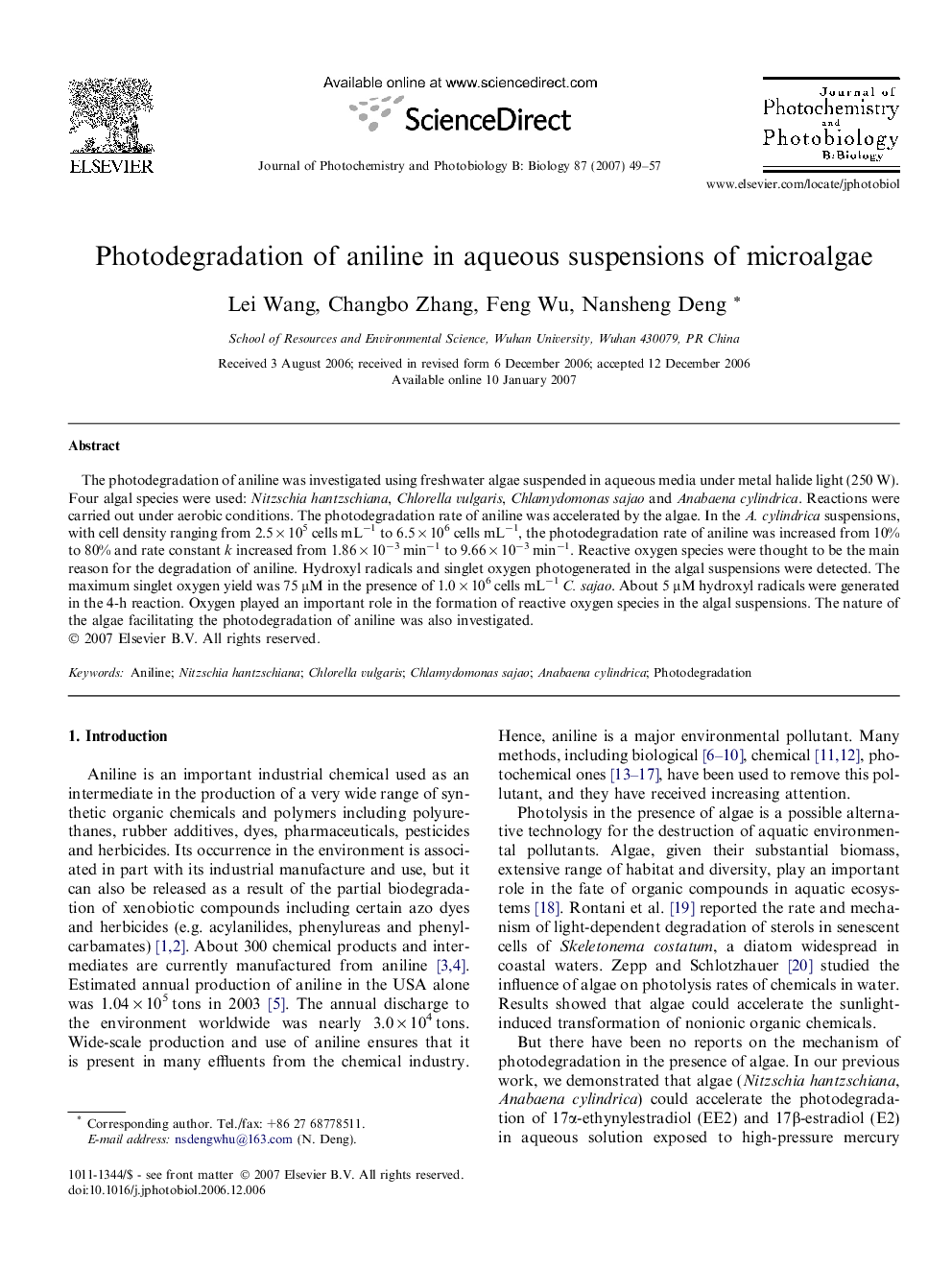| Article ID | Journal | Published Year | Pages | File Type |
|---|---|---|---|---|
| 30520 | Journal of Photochemistry and Photobiology B: Biology | 2007 | 9 Pages |
The photodegradation of aniline was investigated using freshwater algae suspended in aqueous media under metal halide light (250 W). Four algal species were used: Nitzschia hantzschiana, Chlorella vulgaris, Chlamydomonas sajao and Anabaena cylindrica. Reactions were carried out under aerobic conditions. The photodegradation rate of aniline was accelerated by the algae. In the A. cylindrica suspensions, with cell density ranging from 2.5 × 105 cells mL−1 to 6.5 × 106 cells mL−1, the photodegradation rate of aniline was increased from 10% to 80% and rate constant k increased from 1.86 × 10−3 min−1 to 9.66 × 10−3 min−1. Reactive oxygen species were thought to be the main reason for the degradation of aniline. Hydroxyl radicals and singlet oxygen photogenerated in the algal suspensions were detected. The maximum singlet oxygen yield was 75 μM in the presence of 1.0 × 106 cells mL−1C. sajao. About 5 μM hydroxyl radicals were generated in the 4-h reaction. Oxygen played an important role in the formation of reactive oxygen species in the algal suspensions. The nature of the algae facilitating the photodegradation of aniline was also investigated.
